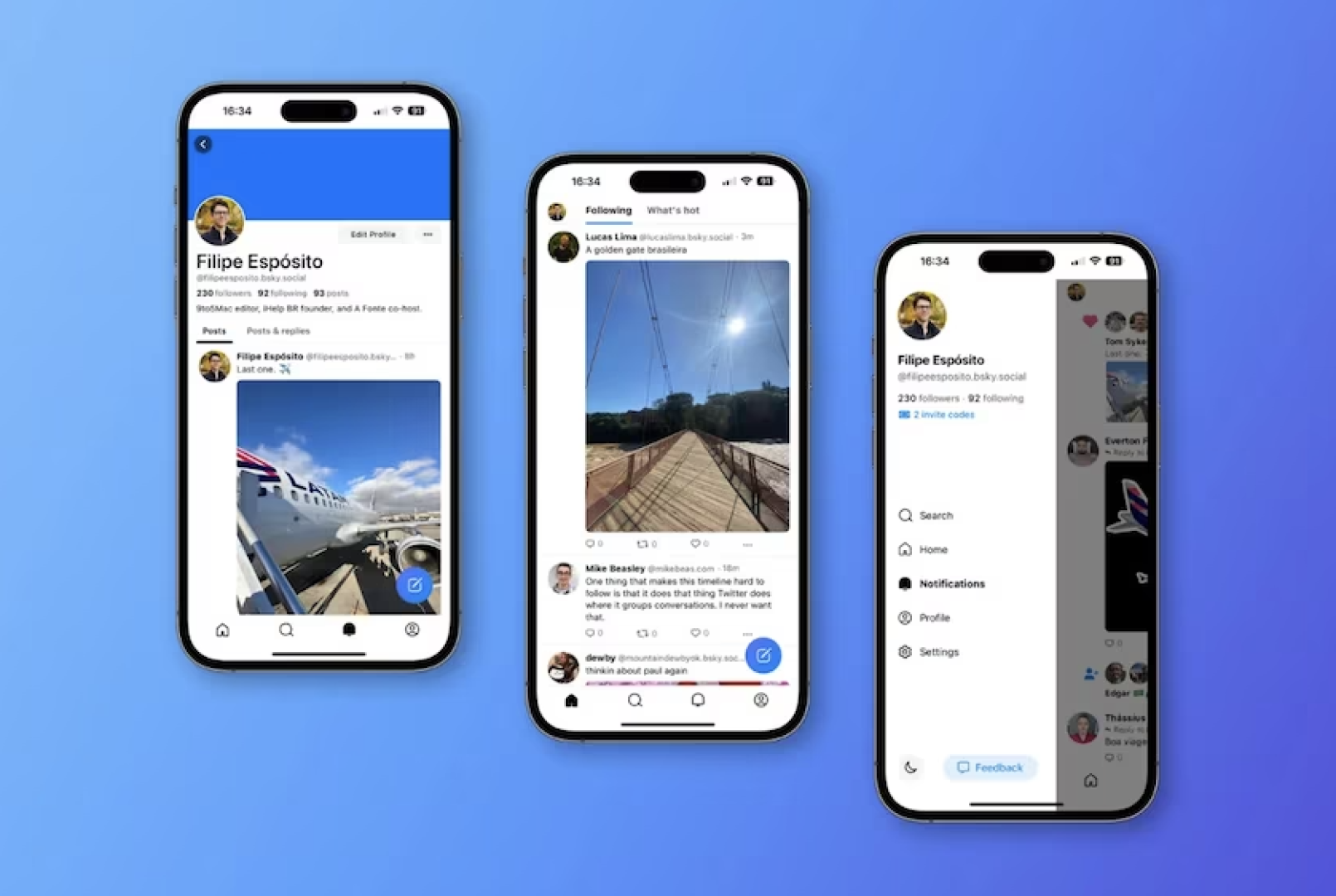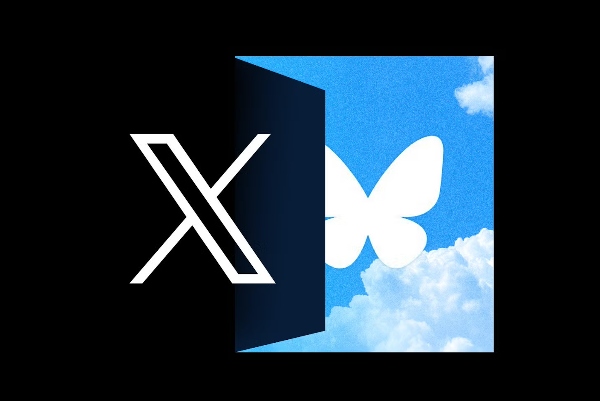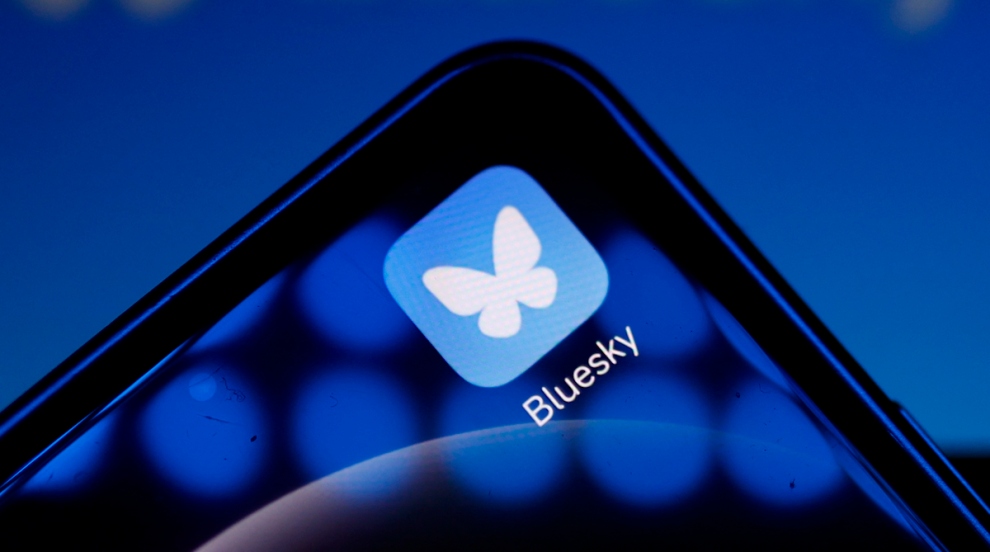The Rising Popularity of Bluesky Explained: Why Users Are Flocking to the New Social Platform
The Rising Popularity of Bluesky Explained: Why Users Are Flocking to the New Social Platform

Many users are joining Bluesky because they seek a platform free from advertisements and hate speech, in addition to yearning for the simplicity and community of the early days of Twitter.
The social media landscape is ever-evolving, with platforms rising and falling based on user preferences, technological advancements, and cultural shifts.
Why Are Users Leaving X Formerly Known as Twitter to Join Bluesky?
Among the newer entrants, Bluesky has quickly captured the attention of many internet users.
1. Simplicity and Authenticity

One of the primary reasons users are migrating to Bluesky is the desire for a simpler, more authentic social media experience. In its essence, Bluesky mirrors what Twitter was in its early days – a place free from aggressive algorithms, where the content is driven by human interaction rather than corporate agendas. This nostalgic return to the roots of microblogging has attracted users who miss the unadulterated, organic conversations of old Twitter before it became X, with its shifts towards commercialization and algorithmic manipulation.
2. Escape from Toxicity
The current social media environment, particularly platforms like X (formerly Twitter), has seen an increase in toxicity, misinformation, and hate speech. Bluesky positions itself as a sanctuary where community guidelines are strictly enforced, promoting a platform where civility reigns.
3. Customization and User Empowerment
Bluesky's architecture allows for what it calls "algorithmic choice." This means users aren't subjected to a one-size-fits-all feed determined by opaque algorithms but can choose or even create their own. This feature empowers users, giving them control over their digital environment, which is a significant departure from the traditional social media model where content is often curated without user input. This customization capability is not just about what content is shown but also how it's displayed, aligning with the broader tech trend towards personalization and privacy.
4. Open Network Philosophy
Bluesky operates on an open protocol, which is part of its foundational ethos. This openness means that Bluesky isn't just a platform but a protocol that allows for interoperability with other services. This aspect of Bluesky is revolutionary in the social media world, promising users that they won't be locked into one ecosystem. This flexibility is attractive to creators, developers, and users who value independence and the freedom to connect across different platforms without losing their social graph or content history. As mentioned by Bluesky itself on X, this setup puts users first, offering a stark contrast to the proprietary systems of its competitors.
5. Innovative Social Dynamics
The platform introduces innovative social dynamics that encourage positive interactions. For instance, when you block someone on Bluesky, their interactions with you vanish not just from your view but are effectively nullified in the broader network context.
6. Community and Early Adopter Enthusiasm

There's a palpable enthusiasm around Bluesky, driven by its community of early adopters. The platform has managed to cultivate an environment where people are eager to contribute positively, share ideas, and engage in meaningful dialogue. This community spirit, often described as the "early-days enthusiasm," is a powerful draw. The platform feels like a fresh slate where every user can have a significant impact, which is particularly appealing to those disillusioned by the overcrowded and often indifferent mega-platforms.
7. No Ads, No Clutter
The absence of ads on Bluesky is another significant pull factor. Users are tired of the incessant advertising that clutters other social media feeds, making Bluesky's ad-free environment a breath of fresh air. This approach not only improves the user experience by reducing visual noise but also removes a common source of privacy concerns, as ads are often linked to tracking user behavior.
Looking towards the future, Bluesky isn't just about what it offers today but its potential. Users are joining not just for what Bluesky is now but for what it promises to be – a platform designed with ethical considerations at its core. This focus on ethical design, where user welfare and data privacy are paramount, aligns with a growing demand for tech that serves its users rather than exploits them.
People are joining Bluesky for a multitude of reasons, each reflecting a broader dissatisfaction with the current state of social media. From its promise of a return to simpler, more authentic interactions to its innovative features like algorithmic choice and stringent community guidelines, Bluesky offers an alternative that many find refreshing. It's not just a platform; it's a movement towards redefining how we interact online, emphasizing user control, privacy, and positivity. For those looking to escape the cacophony of modern social media, Bluesky represents not just an alternative but a potential new standard in digital communication.
Frequently Asked Questions
Is Bluesky Owned by X/Twitter?

No, Bluesky is not owned by X formerly known as Twitter. Although it originated as a project under Twitter's umbrella, it has since become an independent entity. The primary owner of Bluesky is Jay Graber, its CEO, who has guided the platform towards fostering a community-focused environment, emphasizing user safety and open dialogue.
What is Bluesky Used For?

Bluesky is used as a microblogging platform where users can post short messages, engage with others, and share content in a decentralized environment. Here are some of its main uses:
Microblogging: Similar to Twitter now known as X, users can post "skeets" (the Bluesky equivalent of tweets), which are short messages up to 256 characters, allowing for quick updates, thoughts, or links to external content.
Social Networking: Users can follow others, like and repost content, and engage in conversations through replies, fostering a community feel akin to the early days of social media before extensive algorithmic curation.
Content Sharing: It serves as a platform for sharing photos, videos, and links, with the added benefit of decentralization, meaning users aren't locked into one proprietary system.
Customization: Bluesky offers algorithmic choice, allowing users to tailor their feed according to their preferences or even create their own algorithms for content display, which is a significant departure from traditional platforms where the feed is controlled by the platform's algorithms.
Escape from Toxicity: Many users turn to Bluesky to avoid the negativity often found on other platforms, including hate speech and aggressive advertising. Its strict community guidelines aim to promote respectful interactions.
Innovation in Social Media: Being built on an open protocol, Bluesky experiments with new social dynamics, like the way it handles blocking and the promise of interoperability with other services, which could change how we think about social media connectivity and ownership of digital content.
Privacy and Control: Users appreciate Bluesky for its focus on privacy, with features that give them more control over their data and interactions compared to more commercialized platforms.
Bluesky is utilized by those looking for a more authentic, user-controlled, and less toxic social media experience, with an eye towards the future of how social platforms might operate on open, decentralized systems.
What is the Difference between Twitter (Now Known as X) and Bluesky?

Here are the key differences between Twitter (now known as X) and Bluesky:
1. Ownership and Philosophy:
Twitter/X: Owned by X Corp under Elon Musk's leadership, its direction has been to expand into a broader "everything app" with an emphasis on monetization through features like X Premium and advertising.
Bluesky: An independent company not owned by X, focusing on a decentralized model. It was founded by Jack Dorsey but is now led by Jay Graber. Bluesky prioritizes user control, community governance, and openness.
2. Decentralization:
Twitter/X: Centralized, meaning all data and control are managed by a single entity, with limited options for users to control their digital environment beyond basic settings.
Bluesky: Decentralized, built on the AT Protocol, which allows for the potential of user-hosted servers (instances). This means users could have more control over their data and migrate their accounts to different compatible platforms without losing followers or content.
3. Content and User Experience:
Twitter/X: Known for its algorithmic timeline, which often prioritizes content based on engagement, trends, and advertising. The platform has faced criticism for promoting controversial content for engagement.
Bluesky: Focuses on giving users control over their feed through algorithmic choice. Users can select from various algorithms or create their own, aiming for a less manipulated, more personalized feed. It also has a strong stance against hate speech and toxicity.
4. Monetization and Advertising:
Twitter/X: Has a significant focus on monetization with features like paid subscriptions (X Premium), ad revenue sharing, and direct advertising, which can clutter the user experience.
Bluesky: Currently does not support advertising, aiming to keep the platform ad-free. There's an exploration of alternative revenue models like custom domain services, focusing on user experience over profit.
5. Features:
Twitter/X: Offers a wide array of features including live streaming, direct messaging, Twitter Spaces (audio rooms), and detailed analytics for users, especially those with premium accounts.
Bluesky: While it mirrors many basic social media functionalities like posting, liking, and reposting, it lacks some of X's features like direct messaging (at least initially). However, it introduces unique features like the ability to detach a post from a quote and a different approach to blocking where blocked interactions are not just hidden from the blocker but effectively nullified in the platform's ecosystem.
6. Community and Culture:
Twitter/X: Has evolved into a mixed environment with a broad user base, including celebrities, politicians, and brands. The culture has been influenced by its leadership changes and policy shifts, sometimes leading to a perception of increased polarization.
Bluesky: Still in its growth phase, it attracts users looking for a less hostile environment, often described as a return to a more community-driven, less algorithmically controlled space. It's seen as more of a "safe haven" for those tired of the mainstream social media experience.
7. Future Prospects:
Twitter/X: Under Elon Musk, there's a vision of turning it into an all-encompassing app, integrating financial services, commerce, and more, with a focus on being a platform for global conversation.
Bluesky: Aims to innovate in the social media space by fostering an open, decentralized network where users have significant control over their content and experience. Its future might involve more interoperability with other social media services.
In summary, while Bluesky and X share a microblogging foundation, Bluesky seeks to redefine the social media experience through decentralization, user empowerment, and a focus on community health, contrasting with X's trajectory towards centralization, monetization, and broader functionality.
Can Anyone Join Bluesky?

Anyone can join Bluesky. The platform has moved beyond its initial invite-only phase and is now open to the public for registration. Users can sign up directly on the Bluesky website without needing an invite code, which was previously required to manage the platform's growth during its beta phase.
How Does Bluesky Make Money?

Bluesky has outlined several strategies for generating revenue without heavily relying on traditional advertising models:
1. Subscription Services:
Bluesky plans to introduce paid subscriptions for premium features. These could include benefits like higher quality video uploads, enhanced profile customization, or access to exclusive content or features.
2. Custom Domain Sales:
The platform offers a service where users can purchase custom domains to use as their handles. This service is facilitated through partnerships with domain registrars, providing a direct revenue stream from domain sales and management fees.
3. Developer Ecosystem Monetization:
By opening up its AT Protocol, Bluesky allows developers to build on top of its network. It might offer premium API access or developer tools for a fee, enabling third-party developers to create applications or features, with Bluesky potentially taking a cut from any monetization strategies these developers implement.
4. Transaction Fees:
If Bluesky expands into facilitating transactions or operates a marketplace for content or services within its ecosystem, it could charge small fees for each transaction. This would align with its vision of creating a decentralized social internet where economic exchanges can occur.
5. Donations and Patronage:
Bluesky might encourage users to make voluntary contributions or use a patronage model, where users can support the platform directly with donations or through a tipping system for creators, which might involve a service fee.
6. Paid Content or Features:
While not directly advertising, Bluesky could explore monetizing content through paid posts, exclusive feeds, or content created by influencers or brands that users can opt into, perhaps through a system where creators are compensated directly by Bluesky or through its payment system.
7. Grants and Investment:
As a company with a mission to build an open and decentralized social network, Bluesky might receive grants or further investment from entities interested in supporting such initiatives, especially if they align with broader technological or social goals.
8. Data Services (Ethically):
Bluesky might offer data services where it provides aggregate, anonymized data to businesses for market research or trend analysis, ensuring that individual user data privacy is maintained.
The key differentiator in Bluesky's approach is the emphasis on not selling user data for ads, which is a common revenue model for many social platforms. Instead, Bluesky focuses on providing services that users find valuable enough to pay for, maintaining an open ecosystem where users and developers can thrive, and exploring innovative monetization that fits within its ethos of user empowerment and privacy.
Trending
1 How Modern Innovations Are Shaping the Future of Lifestyle Products
Daniel Hall2 Gemini by Google Rolls Out for iOS Users Worldwide
Fabrice Beaux3 Recession Impacts: What Long Distance Movers Need to Know
Daniel Hall4 7 Essential Things to Know About eCommerce SEO Agency
Daniel Hall5 How to Establish Your Brand Identity in a Foreign Market
Daniel Hall

